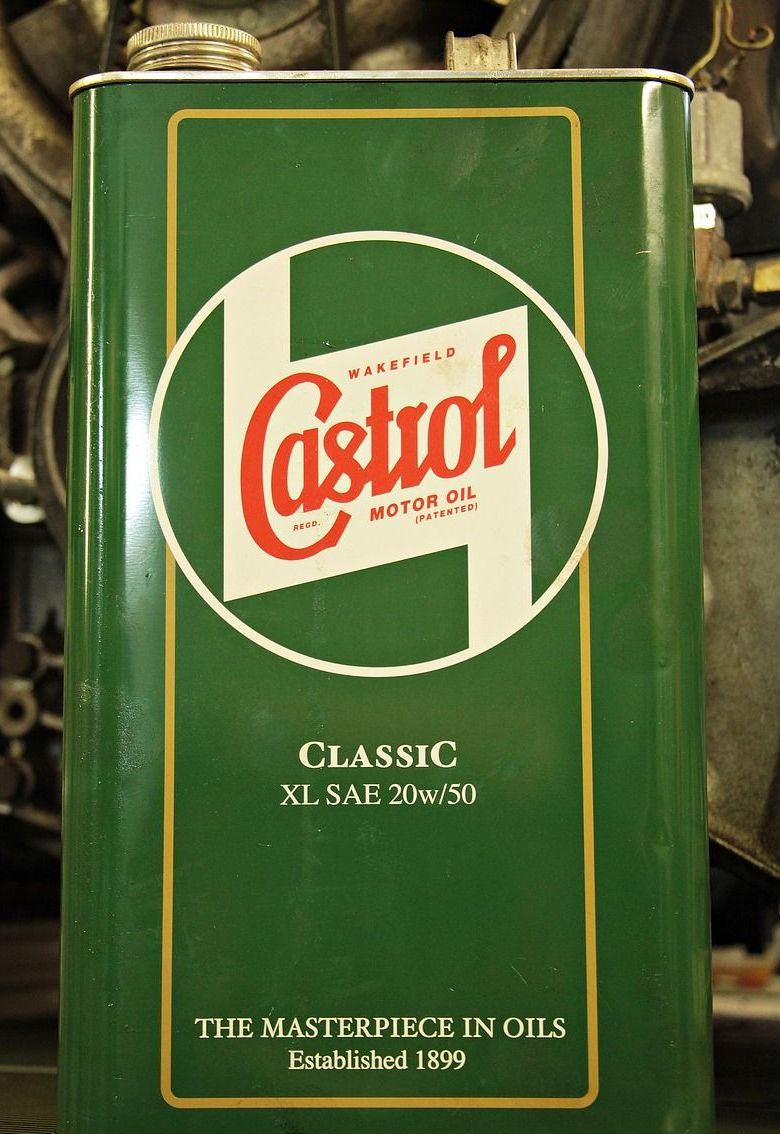
Lubricants are slippery substances that coat mechanical parts having tight tolerances so they can slide against each other with minimal friction. This is very important, since friction heats up the component parts, which lowers their lifetime. Sometimes oil may used to achieve satisfactory results. Sometimes grease is necessary. What is the difference between motor oil and grease?
Oil Composition
Refined oil is derived, as one would expect, from crude oil. Its composition varies due to the source of the crude as well as the processing needed to create the finished product. Oils are viscous, non-polar organic substances of biotic and/or abiotic origin. They do not readily adhere to other surfaces. That being the case, they afford a high degree of lubricity. In addition, motor oil serves as a coolant and a compression seal.

Chemically, motor oils are mostly saturated hydrocarbons of about 15 to 50 carbon atoms. These hydrocarbons may include not only straight and branched chain structures, but also cyclic components. However, petroleum used for motor oil must have certain components removed. These include alkenes and certain nitrogen and sulfur compounds. Such compounds oxidize with heat to produce corrosive acid compounds that attack metal. Formulations include additives, not simply to lower friction, but to increase detergency and dispersancy as well.
Grease Composition
Grease, logically, is not that much different. Grease serves best when it is applied to areas that don’t require as much or as frequent lubrication, or where oil cannot accomplish the task. Grease has a thick initial characteristic, but on use thins out to oil-like consistency due to shear. Grease also impedes the introduction of water and clings to the structure to which it is applied.

Typically, grease consists of an oil emulsified with a thickening soap. As a result, greases are said to be thixotropic. The soap may be metallic stearates such as calcium or lithium stearate or stearate derivatives. Perhaps the reader has heard of lithium grease? Other thickeners may also be added to the oil, such as clays or mica. Other ingredients may be added to greases, such as graphite or molybdenum sulfide.
Motor Oil and Grease in Conclusion
As can be readily discerned from the discourse above, motor oil and grease are closely related. Additives are the main difference. For oil, they usually are many and varied to “fine-tune” the product and its viscosity. The main additive in grease is a thickening agent such as a metallic soap, which is itself slippery. It is used as lubricant in applications where heavy viscosity is needed and oil is impractical to use.
Note: You might also enjoy What is the Difference between Soap and Detergent?
References:
- National Park Service: Environmental Contaminants Encyclopedia – Oil, New (Unused Motor Oil) Entry
- Used Mineral-Based Crankcase Oil: Chemical Identity
- NASA: Real Time Oil Reservoir Evaluation Using Nanotechnology
← Back to Classic Science
← Home

Love that word thixotropic. I believe it is the word that is also applied to non-drip paint?
Although I’m not certain, it is most likely. I once was involved in the manufacture of thick-film electronic pastes that were fired on ceramic substrates. The pastes that were formulated were much like paint and were considered thixotropic.
I know only somethings about oil and grease. Oil floats to the top of water but grease sticks to the pipes.